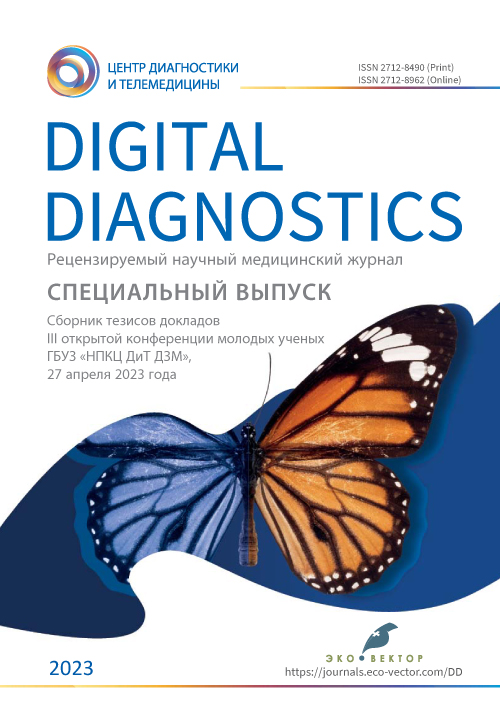Применение хирургических шаблонов в повседневной практике стоматолога-хирурга
- Авторы: Логункова В.Г.1, Межлумян А.А.1
-
Учреждения:
- Рязанский государственный медицинский университет имени академика И.П. Павлова
- Выпуск: Том 4, № 1S (2023)
- Страницы: 84-86
- Раздел: Материалы конференции
- Статья получена: 18.05.2023
- Статья одобрена: 18.05.2023
- Статья опубликована: 26.06.2023
- URL: https://jdigitaldiagnostics.com/DD/article/view/430353
- DOI: https://doi.org/10.17816/DD430353
- ID: 430353
Цитировать
Полный текст
Аннотация
Обоснование: 3D-технологии позволяют создавать индивидуальные хирургические шаблоны. Это специальная конструкция, с помощью которой возможно точно устанавливать дентальные имплантаты в ткани челюсти. Шаблоны по типу фиксации делятся на накостные с фиксацией на пины и винты, назубные и надесневые с фиксацией на пины. Хирургический шаблон изготавливается методом 3D-печати из специальной смолы. Технология позволяет точно переносить компьютерное моделирование на челюсть пациента. Важно учитывать оптимальный угол для введения имплантата и свободное наложение шаблона, который имеет отверстия для позиционирования и охлаждения слизистой оболочки. Цели изготовления шаблона — правильное позиционирование имплантата и точность его установки, что влияет на успех дальнейшего протезирования. Шаблон является связующим звеном между хирургией и ортопедией. При правильном позиционировании имплантатов повышается точность установки ортопедического протеза.
Цель: провести сравнительную оценку стандартного протокола имплантации и установки имплантата с применением хирургического шаблона, изготовленного методом 3D-печати.
Методы: проведена сравнительная оценка двух групп пациентов. Первой группе проводили имплантацию с применением хирургического шаблона, второй — без применения шаблона, по стандартной методике. Всего нами были обследованы 35 пациентов с частичной адентией и 10 — с полной адентией. Проведена оценка эффективности применения хирургических шаблонов во время установки дентальных имплантатов, а также оценены риски получения осложнений.
Результаты: в первой группе, где применяли хирургические шаблоны, отмечалось сокращение продолжительности операции на 40%, уменьшение площади разреза десны на 90%, а также обеспечивалось точное позиционирование конструкции. При оценке отдалённых результатов послеоперационные осложнения, такие как боль, отёк, кровотечение и онемение, развиваются реже на 70%. Второй группе проводили имплантацию по стандартной методике и наблюдали отклонение имплантата от запланированного положения у 35% пациентов. Эффективность хирургических шаблонов заключается в точности позиционирования имплантатов, точности изготовления зубных протезов, а также уменьшении осложнений.
Заключение: применение хирургических шаблонов показано при сложных клинических случаях, критической атрофии костной ткани, а также для исключения повреждения анатомически важных зон. Планирование хирургического шаблона происходит одномоментно с установкой имплантата и с учётом последующей ортопедической конструкции, так как точность позиционирования влияет на точность изготовления ортопедических конструкций. Использование передовых технологий повышает эффективность дентальной имплантации.
Полный текст
Обоснование: 3D-технологии позволяют создавать индивидуальные хирургические шаблоны. Это специальная конструкция, с помощью которой возможно точно устанавливать дентальные имплантаты в ткани челюсти. Шаблоны по типу фиксации делятся на накостные с фиксацией на пины и винты, назубные и надесневые с фиксацией на пины. Хирургический шаблон изготавливается методом 3D-печати из специальной смолы. Технология позволяет точно переносить компьютерное моделирование на челюсть пациента. Важно учитывать оптимальный угол для введения имплантата и свободное наложение шаблона, который имеет отверстия для позиционирования и охлаждения слизистой оболочки. Цели изготовления шаблона — правильное позиционирование имплантата и точность его установки, что влияет на успех дальнейшего протезирования. Шаблон является связующим звеном между хирургией и ортопедией. При правильном позиционировании имплантатов повышается точность установки ортопедического протеза.
Цель: провести сравнительную оценку стандартного протокола имплантации и установки имплантата с применением хирургического шаблона, изготовленного методом 3D-печати.
Методы: проведена сравнительная оценка двух групп пациентов. Первой группе проводили имплантацию с применением хирургического шаблона, второй — без применения шаблона, по стандартной методике. Всего нами были обследованы 35 пациентов с частичной адентией и 10 — с полной адентией. Проведена оценка эффективности применения хирургических шаблонов во время установки дентальных имплантатов, а также оценены риски получения осложнений.
Результаты: в первой группе, где применяли хирургические шаблоны, отмечалось сокращение продолжительности операции на 40%, уменьшение площади разреза десны на 90%, а также обеспечивалось точное позиционирование конструкции. При оценке отдалённых результатов послеоперационные осложнения, такие как боль, отёк, кровотечение и онемение, развиваются реже на 70%. Второй группе проводили имплантацию по стандартной методике и наблюдали отклонение имплантата от запланированного положения у 35% пациентов. Эффективность хирургических шаблонов заключается в точности позиционирования имплантатов, точности изготовления зубных протезов, а также уменьшении осложнений.
Заключение: применение хирургических шаблонов показано при сложных клинических случаях, критической атрофии костной ткани, а также для исключения повреждения анатомически важных зон. Планирование хирургического шаблона происходит одномоментно с установкой имплантата и с учётом последующей ортопедической конструкции, так как точность позиционирования влияет на точность изготовления ортопедических конструкций. Использование передовых технологий повышает эффективность дентальной имплантации.
Об авторах
Валерия Геннадьевна Логункова
Рязанский государственный медицинский университет имени академика И.П. Павлова
Автор, ответственный за переписку.
Email: Logunkova02@mail.ru
ORCID iD: 0009-0004-0546-8435
Россия, Рязань
Арман Арменович Межлумян
Рязанский государственный медицинский университет имени академика И.П. Павлова
Email: arman.mezhlumyan@mail.ru
ORCID iD: 0009-0002-5926-5073
Россия, Рязань
Список литературы
- Tian Y.A., Chen C., Xu X., et al. Review of 3D Printing in Dentistry: Technologies, Affecting Factors, and Applications // Scanning. 2021. Vol. 2021. P. 9950131. doi: 10.1155/2021/9950131
- Vandenberghe B. The digital patient — Imaging science in dentistry // J Dent. 2018. Vol. 74, Suppl. 1. P. S21–S26. doi: 10.1016/j.jdent.2018.04.019
- Chuguryan M.A., Stepanov I.V. Surgical 3d navigation templates in immediate dental implant: effectiveness of application // International Journal of Humanities and Natural Sciences. 2022. Vol. 70, N 7-3. P. 9–12. doi: 10.24412/2500-1000-2022-7-3-9-12
- Rothlauf S., Pieralli S., Wesemann C., et al. Influence of planning software and surgical template design on the accuracy of static computer assisted implant surgery performed using surgical guides fabricated with material extrusion technology: An in vitro study // J Dent. 2023. Vol. 132. P. 104482. doi: 10.1016/j.jdent.2023.104482
Дополнительные файлы















